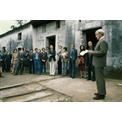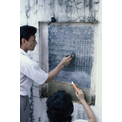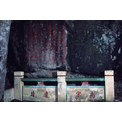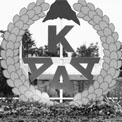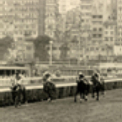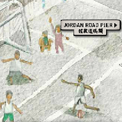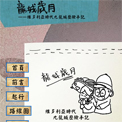 Collections
Collections Hong Kong, Benevolent City: Tung Wah and the Growth of Chinese Communities
Hong Kong, Benevolent City: Tung Wah and the Growth of Chinese Communities Conservation and Transmission
Conservation and Transmission Tung Wah Group of Hospitals' Contribution to the Conservation of Cultural Heritage
Tung Wah Group of Hospitals' Contribution to the Conservation of Cultural Heritage
1. Cultural Heritage Conservation in Hong Kong
“Cultural heritage” refers to historical sites and monuments, as well as objects that are emblematic of economic production, craftsmanship, thoughts, culture and social life from different time periods. The Hong Kong Government enacted the Antiquities and Monuments Ordinance (Cap. 53) in 1976. That same year, it established the Antiquities Advisory Board and the Antiquities and Monuments Office to oversee relevant work. In this way, the government has endeavoured to protect archaeological sites, restore historic buildings and promote heritage education to enhance public understanding of heritage conservation. Entering the 21st century, the government stepped up resource investment in heritage conservation, shifting from the previous emphasis on research and protection of historical sites and buildings to revitalisation and actual utilization of graded historical buildings. There has been a series of new measures for preservation of historic sites and buildings, including the establishment of the Commissioner for Heritage’s Office, implementation of heritage impact assessment for new capital works, introduction of the Revitalising Historic Buildings through Partnership Scheme to the government owned historic buildings as well as offering financial assistance for maintenance of privately owned graded historic buildings.
2. Temple Management by Tung Wah
The temple was at the core of early local Chinese community activities. Among the city’s old temples, the I-tsz and the Man Mo Temple in Sheung Wan were closely related to the founding of the Tung Wah Hospital. Located on Tai Ping Shan Street, the I-tsz houses spirit tablets of the destitute and has been managed by Tung Wah since 1872. In 1895, reconstruction of the I-tsz was completed and a plaque bearing the inscription “guang fu ci hang (Kwong Fook, vessel of compassion)” was added above the main entrance. The building has been known as the Kwong Fook I-tsz ever since. Meanwhile, the Man Mo Temple in Sheung Wan was where early local Chinese gathered to discuss business and community affairs. By organising Yulan Festival rituals, the temple successfully brought together those Chinese people living on the northern coast of Hong Kong Island. To this day, the temple has on its premises a number of relics received from “the believers of Hong Kong” or “the believers of Four Wan”. Before the founding of the Tung Wah Hospital, the general committee of the temple, made up of local Chinese merchant gentry, liaised with the Hong Kong Government and received mainland government officials passing through Hong Kong.
In 1908 the government enacted the Man Mo Temple Ordinance marking the point in time when Tung Wah Hospital officially took over Man Mo Temple and its properties. Income from the temple was used to fund free medical services and education. Later the government commissioned the Kwong Wah Hospital to manage the Tin Hau Temple in Yau Mai Tei, the Kwun Yum Temple in Mongkok and the Hung Shing Temple in Tai Kok Tsui, so that income from the temples and their properties could be combined to contribute to hospital funding. At present, the Tung Wah Group of Hospitals manages 12 temples, including, along with the five temples mentioned above, the All Saints Temple, the Kwun Yam Buddhist Temple in Tsz Wan Shan, the Hung Shing Temple in Wan Chai, as well as the Fook Tak Temple, the She Altar, the Shing Wong Temple and the Shu Yuan (Study Hall) in Yau Ma Tei. The Tung Wah Group of Hospitals (TWGHs) is responsible for the maintenance, repair and restoration of the temples under its management.
3. Conservation of the Tung Wah Coffin Home
The Tung Wah Coffin Home was formerly called “the Slaughter House Coffin Home in Kennedy Town” and was managed by the general committee of the Man Mo Temple. In 1875, management of the coffin home was handed over to Tung Wah. In 1899 Tung Wah obtained the government’s approval to move the coffin home to its present location in Sandy Bay. The facility, renamed the Tung Wah Coffin Home, was intricately related to the history of the repatriation of remains for overseas Chinese. The coffin home helped transport over hundred thousand sets of skeletal remains to China, bolstering Hong Kong’s role as a bridge between mainland and overseas Chinese communities. The part the coffin home has played in history is unique and immensely significant. Since its completion, the Tung Wah Coffin Home has been repaired and expanded several times to meet the changing needs of society. In 2003, Tung Wah carried out a restoration project with the aim to preserve the original appearance of the architecture cluster composed of buildings from different time periods. Through this coffin home’s architecture, the history of the process of Chinese interment and funerary rites was successfully documented. In 2005, the Tung Wah Coffin Home restoration project won the Award of Honour in the Heritage Preservation and Conservation Awards (2004) organised by the Antiquities and Monuments Office of the HKSAR Government, as well as the Award of Merit in the Asia-Pacific Heritage Awards (2005) organised by the United Nations Educational, Scientific and Cultural Organisation (UNESCO). In recent years, the Tung Wah Museum has begun organising, restoring and publishing historical documents relevant to coffin homes. The archives are believed to be extremely useful for research into the history of overseas Chinese and also the role of Tung Wah in the global charity network.
4. Tung Wah Museum
The Tung Wah Museum is situated in the former Main Hall Building of the Kwong Wah Hospital. Completed in 1911, the building was initially one storey high. Later, an attic was built above the side halls upgrading the structure to a two-storey building. In 1958, the hospital underwent reconstruction, but the Main Hall Building was preserved to bear testimony to the history of Tung Wah and Hong Kong. The Tung Wah board of directors converted the building into the Tung Wah Museum on the occasion of the Group’s centenary in 1970. The layout of the museum’s main hall is similar to traditional halls seen in South China. At the same time, the building carries traces of Western architectural features. The structure was gazetted as declared monument in 2010.
The Tung Wah Museum endeavours to collect, restore and preserve relics and documents related to the history of the Tung Wah Group of Hospitals. At present, the museum’s collection consists of 600 exhibits, over 7,000 historical documents and more than 20,000 photographs. Exhibition rooms within the museum are set up to illustrate the history of TWGHs. The Tung Wah Museum periodically organises seminars and educational activities and in recent years it has engaged in joint research projects with other institutions and organisations, including the Tung Wah Group of Hospitals Oral History Project with the Centre of Asian Studies of the University of Hong Kong, and the Research Project on the Archives of the Tung Wah Group of Hospitals with the History Department of the Chinese University of Hong Kong. The museum has a team of outstanding volunteers who contribute immensely to the digitalisation of documents and participate in research on tablets and couplets.
5. Document Restoration and Preservation
The Tung Wah Group of Hospitals understands the importance of heritage conservation and restoration, and actively carries out restoration on relics and documents related to the history of Tung Wah. In 2000, the Tung Wah Museum restored and re-bound 718 historical records within its collection and also produced microfilms of these documents. In 2004, the museum created digital images of 101 historical documents related to coffin homes, dated from 1915 to 1972 and totalling 20,000 pages. These efforts not only provide exceptional ease of access for research into the Tung Wah Coffin Home and the practice of repatriation of remains of overseas Chinese, but they have also laid the foundation for future document digitalisation projects.
In 2009, Tung Wah hired two overseas restoration experts to review the condition of its coffin home archive and perform immediate restoration on the most severely damaged documents. These experts also drew up long-term preservation policies for those documents in relatively stable condition. Tung Wah’s coffin home archive includes letters, registration records, documents, loose shipping records and documents providing proof of entry into and exit from the Tung Wah Coffin Home. The two experts in paper restoration had to analyse the historical documents to identify the type of paper used before restoring them with materials that resemble the originals. They also meticulously removed the acidic adhesive used in the past to prevent the paper from turning increasingly brittle, as well as reinforced the paper at damaged points to avoid further changes in texture.
6. Compiling, Organising and Publishing Archives
The Tung Wah Group of Hospitals has an extremely rich collection of historical documents. Since the 1960s, Tung Wah has published a number of important historical documents and records that offer detailed illustration of the group’s development. To further open its archives to researchers, in 2005 Tung Wah participated in a joint project with the Centre of Asian Studies of the University of Hong Kong and published Yishan Xingdao: Donghua Sanyuan 135 Zhounian Jinian Zhuanti Wenji (Charitable deeds: A collection of commemorative works of Tung Wah in celebration of its 135th anniversary) in 2006. That same year, the museum worked with the History Department of the Chinese University of Hong Kong on the Research Project on the Archives of the Tung Wah Group of Hospitals and compiled over 1,000 documents from Tung Wah’s archives into 5 volumes. The project documents Tung Wah’s history from 1870 to 1970 through the group’s archives that include zhenxin lu (annual reports), minutes of board meetings, correspondence between the Tung Wah Hospital and other organisations, newspaper clippings, government annual reports and historical photographs. Since Tung Wah’s archives contain numerous records of the activities of Hong Kong Chinese society, the documents also provide first-hand information for research into Hong Kong’s social history.
Tung Wah’s another publication Shan Yu Ren Tong: Yu Xianggang Tongbu Chengzhang De Donghua Sanyuan (Charity brings happiness to the giver: A journey of mutual growth for TWGHs and Hong Kong (1870-1997)) covers Tung Wah’s development from its founding up until Hong Kong’s return to China. The book analyses Tung Wah’s contribution through local social development and modern Chinese history and provides valuable reference for the charity industry’s future development, both in Hong Kong and in mainland China.
7. Organising and Preserving Oral History
Tung Wah is the first local charitable organisation to have built its own oral history archive. In 2006, Tung Wah and the Centre of Asian Studies of the University of Hong Kong embarked on the Tung Wah Group of Hospitals Oral History Project. For this three-year initiative, researchers interviewed 100 Tung Wah stakeholders, including former chairmen, retirees or veteran employees approaching retirement at different levels of employment in Tung Wah’s service units, graduates of Tung Wah schools and active fund raisers for the organization. First person memories, experiences, viewpoints and passion help depict the evolution of Tung Wah’s medical, health, education, public and social services as well as fund-raising activities, along with the changes in the management and organisation of charitable organisations. These precious oral accounts provide important information on the shift in Tung Wah’s development after the Second World War, supplementing existing archives and at the same time bringing back forgotten memories of Tung Wah. They also illustrate, in a somewhat indirect way, the relationship between Tung Wah and the history of Hong Kong’s development as a whole.
8. Promotion and Education of Cultural Heritage Conservation
In the 21st century, heritage conservation has become an important agenda item for governments across the globe. In addition to experts, scholars and large-scale organisations, civil organisations are also playing an active role in preserving local history and culture. Many organisations and individuals have produced written records of otherwise unknown people and incidents through collecting and analysing historical documents, relics and oral accounts. In this wave of heritage and cultural conservation, Tung Wah’s collection of relics and historical documents has gained increased recognition from local and overseas scholars who hope to re-construct the history of Hong Kong – especially that of the city’s early Chinese community – through studying Tung Wah’s archives. Indeed, Tung Wah has offered unwavering support to such research. Over the years, the group has worked with various heritage organisations and museums on a number of research projects to preserve the cultural heritage of the organisation as well as provide new perspectives for research into Hong Kong’s social development. In order to facilitate long term planning and coordinate relevant research work, Tung Wah established the Record and Heritage Office in April 2010. The office is devoted to the preservation of Tung Wah’s archives and relics, and at the same time develops and manages the Tung Wah Museum. It is hoped that, while striving to preserve and promote the history of Tung Wah, the office will also help drive local heritage preservation work.
